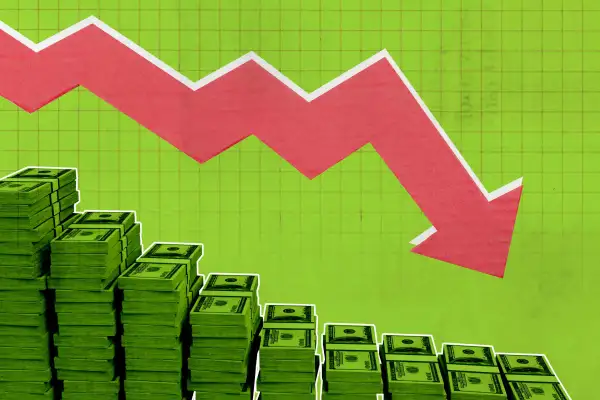The 'Savings Boom Is Over' as Americans Scramble to Cope With Inflation

Americans are saving at the lowest level in about a decade as increased prices for everything from gas to groceries continue to weigh heavily on their budgets.
The U.S. Commerce Department released new numbers Friday showing that the personal saving rate has declined in the wake of record-setting inflation. In March 2022, the saving rate slid to 6.2%, down from 6.8% in February.
“To afford higher priced goods [sic] consumers tapped into their meager savings, plunging the savings rate to its lowest level since Dec. 2013,” tweeted Peter Schiff, chief economist at the investment firm Euro Pacific Capital.
The department defines the personal saving rate as the percentage people save of their disposable income after taxes. In its report, the department said Americans’ incomes grew in March but did not keep up with the increased pace of their spending.
This uptick was due in part to soaring gasoline and food expenses, largely mirroring the Labor Department's latest inflation report. In March, the inflation rate hit a 41-year high at 8.5%, significantly more than the 2% rate the federal government typically prefers. Skyrocketing prices for gas, groceries and housing were key contributors.
Economists note that since spending is outpacing income gains, Americans are dipping into their savings to bridge the gap, thus pushing the saving rate down. March marked the third month in a row where the saving rate fell below the pre-pandemic average of 7.5%.
For a while, the plummeting saving rate was actually hailed as a sign of the U.S. economy returning to normal.
At the beginning of the COVID-19 crisis, the saving rate was an astronomical 34%. As the economy screeched to a halt in summer and spring 2020, folks stayed indoors and all but stopped spending money on things like travel, restaurants and live entertainment. Millions of people also received several rounds of stimulus checks.
The result was a massive increase to the personal saving rate, dwarfing even the 28% saving rate notched during World War II. At the height of the pandemic, Maria Solovieva, an economist and chartered financial analyst for TD Economics, estimated that Americans stockpiled $2.7 trillion in “excess savings.”
While it may sound counterintuitive, savings at such an elevated level can actually be a sign of an unhealthy economy — one in which consumers aren’t spending their money, businesses are shuttering and unemployment is rampant. The economy seems to be past this stage, but it’s now barreling through a period of record-setting inflation that’s forcing consumers to quickly burn through any excess cash they might have had.
In short, the commerce report is confirmation that the “savings boom is over,” according to Liz Ann Sonders, chief investment strategist at financial services firm Charles Schwab.
Economists once celebrated as the saving rate dropped from above 30% and spending started to normalize. Now, they are split on whether the current saving rate is too low — and wondering if Americans have enough money stashed away to see them through this bout of inflation.
More from Money:
Housing Market Cooldown: 10 Cities Where List Prices Are Dropping
Interest Rate for 'Inflation-Proof' Savings Bonds to Top 9% for First Time Ever

